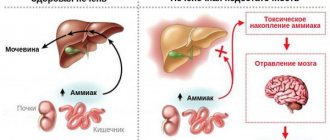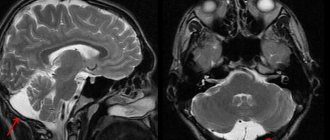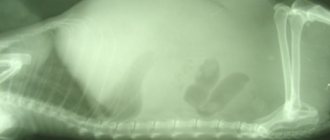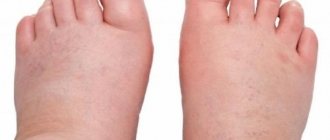Main causes and symptoms
There are many reasons that can trigger the development of perforation of the eardrum.
Taking into account the cause of damage to the tympanic septum, the appearance of perforation may be due to injury or inflammatory processes. The membrane ruptures when there is a sharp increase in air pressure on the membrane, when it bends strongly into the cavity of the middle ear.
The formation of a hole in the eardrum can be caused by many factors, namely:
- Previous otitis media.
- Impact of atmospheric pressure.
- Traumatic brain injury.
- Poor ear hygiene.
- Noise trauma.
A purulent inflammatory process in the middle ear can also cause the formation of a hole in the membrane. The accumulating fluid in the cavity puts strong pressure on the eardrum. As a result, it becomes thinner, which leads to the formation of a hole.
Quite often, damage to the eardrum occurs as a result of treating the ear or careless cleaning with a sharp object: matches, cotton swabs, etc.
In case of acoustic damage, the membrane may burst or a hole may form in it. This can happen when there is a lot of noise or cracking.
Severe thermal damage under industrial conditions can cause the death of a section of the membrane or its perforation. A hole in the eardrum can occur due to chemical damage from acids, alkalis or caustic chemical compounds. In children, the eardrum most often ruptures when foreign bodies are introduced into the ear.
If the membrane is damaged, the patient may complain of sharp pain in the ear, clear or purulent discharge, hearing loss or tinnitus. In case of traumatic injury, bloody discharge appears from the ear. Body temperature may also increase, disorientation and nausea may appear. If these symptoms occur, you should consult a doctor to avoid spreading the infection inside and prevent possible complications.
Diagnostics
We examine the condition of the eardrum in the ENT doctor’s office
Diagnosis of perforation of the tympanic septum involves collecting the patient’s medical history and examining the ear cavity externally. The doctor performs palpation and a thorough examination of the ear canal using special instruments.
To diagnose the presence of a hole in the tympanic septum or its rupture, instrumental diagnostic methods are used: otoscopy, audiometry, computed tomography.
During otoscopy, the otolaryngologist inserts a funnel and pulls the auricle upward and backward. This method helps to better see the ear canal and eardrum. The doctor then shines a light into the ear canal and can note the extent of damage to the eardrum. If blood or pus is present, the doctor takes a small amount of material for examination.
Audiometry is carried out to identify the degree of hearing loss and measure its acuity.
The most informative instrumental examination method is computed tomography. It is used to clarify the diagnosis and identify the degree of damage to the auditory membrane.
The patient must also undergo laboratory tests: fluid from the ear for bacteriology and a general blood test to identify the inflammatory process.
Perforation of the eardrum (in the ear), treatment at the City Med Clinic Orenburg
The eardrum is a thin multi-layered membrane that separates the ear canal from the middle ear cavity. The role of this membrane is to transmit sound waves (air vibration) to the hammer, which then travel to the auditory ossicles of the inner ear. Thus, the eardrum is an important element of the acoustic system that the ear represents. In cases where a hole or rupture appears in the eardrum, the conduction of sounds is disrupted, which, accordingly, impairs hearing. In addition, when the membrane is perforated, a kind of barrier disappears, which does not allow pathogens - bacteria, viruses and fungi - to penetrate into the middle ear.
Treatment method and prognosis
Tympanoplasty – surgery to repair the eardrum
The hole in the eardrum usually heals on its own within a few weeks, but if this does not happen, surgery is required.
If there is a small hole in the membrane, drug treatment is carried out.
- Sterile turundas soaked in a special antibacterial solution are inserted into the ear canal.
- To eliminate pain, painkillers are prescribed.
- For purulent otitis media, antibacterial drops are used: Tsipromed, Normax, Otofa, etc. A few drops are instilled into each ear canal 2-3 times a day.
- Not prescribed for perforation of the tympanic septum with ototoxic effects: Polydexa, Otinum, Anauran, Sofradex, etc.
The main methods of treating eardrum perforation:
- Patch the hole. If the gap is small, you can close the hole with a patch. The edges of the hole are treated with a special preparation for growth, and then a paper patch is applied. It may take 3-4 procedures to completely eliminate the hole.
- Operation. If there is a large hole or a complete rupture of the eardrum, surgery is performed. This procedure is called tympanoplasty or myringoplasty and is performed under general anesthesia. A small incision is made above the ear, from which a thin piece of skin is removed. It will be used to stitch the holes in the membrane.
Next, the surgeon lifts the eardrum and places a flap over the hole. Absorbable materials are also placed to keep the flap in position until complete healing. The material will completely dissolve in a few weeks. To avoid infection, a cotton swab moistened with an antibacterial agent is inserted into the ear canal.
At first, the manipulation will cause discomfort to the person. Painful discomfort passes quickly.
However, the patient must be careful in the postoperative period. Do not blow your nose too much or make sucking movements through your nose. The pressure in the cavity increases, which can lead to displacement of the flap.
The surgical method of eliminating perforation can improve hearing, eliminate noise, and prevent water from entering the middle ear and the formation of a cyst. The prognosis is favorable if you follow all the doctor’s recommendations.
Possible complications and consequences
Most often, perforation of the eardrum heals on its own without causing complications!
Against the background of a violation of the integrity of the membrane and penetration of infection inside, complications such as:
- Otitis
- Labyrinthitis
- Acoustic neuritis
Pathogenic microorganisms can penetrate deeper, then this can lead to the development of meningitis and encephalitis. A large rupture of the membrane can cause hearing loss. This is a temporary complication and healing is slow. If perforation occurs as a result of a traumatic brain injury, resulting in damage to the middle and inner ear, then hearing loss may be severe or permanent.
In addition, recurrent infection of the middle ear cavity and chronic inflammation may occur, which can also cause hearing loss. If the membrane is damaged, complications arise in the form of sensorineural hearing loss, it is possible to perform surgical intervention to restore hearing. If necessary, use hearing aids.
Useful video - What happens if the eardrum bursts:
How to remove cotton wool from your ear and why a foreign object is dangerous
To avoid the development of possible complications and damage to the eardrum, you must adhere to the following recommendations:
- Do not swim in contaminated water.
- Treat ear infections promptly.
- Do not swim underwater if you have allergies or a runny nose.
- Proper ear hygiene should be performed.
- Avoid excessive noise, listen to loud music or use headphones.
- Do not use sharp or blunt objects to clean your ears.
- During the flight, to avoid barotrauma, it is recommended to suck on candy or lollipop.
- It is important to ensure that no foreign objects get into the ear. If a foreign body gets into the ear cavity, you should consult a doctor, but do not remove the object yourself.
- If there are signs of inflammation in the middle ear, you should immediately contact an otolaryngologist. You should not self-medicate.
These simple recommendations will help prevent eardrum perforation.
Diagnosis of eardrum perforation at City Med
Endoscopic examination of the ear is the main method for diagnosing this pathology and is often quite sufficient. It includes otoscopy and microotoscopy, which are performed by an otolaryngologist. The study is carried out using an ENT machine, which allows you to visualize defects in the eardrum, hemorrhages, the presence of pus, and also take pathological discharge for bacteriological analysis in order to determine the causative agents of infection and their sensitivity to antibacterial drugs. If necessary, our clinic uses additional research methods: audiometry, tympanometry, stabilography, tuning fork examination, electrocochleography, acoustic impedance measurement, caloric test, vestibulometry.
Comments (6)
Arthur
09.24.2017 at 10:04 |
Hello. I had otitis media back in school, which is why my right ear hears much worse. About six months ago, noises started (at first I thought it was something buzzing from the neighbors), then suddenly a very loud hum (as if I was flying on an airplane) for about an hour. After which the whistle in my head is sometimes quieter, sometimes louder, but always. I took betaserc and other pills, injections (such as Actovigin on K), nothing helps. I recently underwent audiometry, the doctor said that the nerve is intact and if there was a patch on the membrane, I would hear much better. (At the age of 50, find out what I lost) Question: could this hole be the cause of the whistling in the head? After all, as I myself believe, this happened after the bath, when I could not cool down in any way (the sweat was pouring off me in the street) and took off my hat. And it was frosty.Answer
Anya
03/09/2018 at 01:10 |
Wow, judging by Arthur's story, a patent membrane can remain so until you seek help from a doctor. I often use earplugs and when I take them out, I feel pain in my ears - every time I’m afraid that I’ll pull out all the insides of my ears with the earplugs. Of course, the consequences of a ruptured eardrum are bad. It seems that a slight hearing loss is not a big problem, but when an earplug is inserted in one ear and, say, the other is free, then you already begin to lose your balance and knock the corners off.
Answer
VALENTINE
02/17/2019 at 18:41 |
I HAVE DEAFNESS IN THE RIGHT EAR 50 YEARS AFTER I HAD THE FLU IN CHILDHOOD. MY EAR STARTED LEAKING, I WENT TO THE DOCTOR, SHE WASHED MY EAR UNDER HIGH PRESSURE WITH A SOLUTION OF FURACILIN, OJALA, WHAT A BIG HOLE IN THE EAR. NOW AN ENDLESS WHITE, GREEN LIQUID IS FLOWING. HERE ARE THE DOCTORS FOR YOU. ANOTHER DOCTOR DIDN'T EVEN VISIT HO, AND PRESCRIBED A SOLUTION OF LEVOMYCETIN. WHO WILL HELP ME? AND THE NOISE IS CONSTANT.
Answer
Expert Marina Rusetskaya
02/19/2019 at 00:19 |
Valentina, As a child, you most likely developed otitis media as a complication after the flu. Perforation of the eardrum is a consequence of untreated otitis media.
When the eardrum is perforated, people always develop chronic otitis media, which is manifested by suppuration from the ear when fluid gets in or from hypothermia.
Rinsing the ear, especially under pressure, is not recommended if the eardrum is perforated, because this will provoke an exacerbation of the chronic form of the disease.
Patients with suppuration from the ear due to chronic otitis are prescribed antibiotics, but, as a rule, not locally, but systemically (orally, intravenously or intramuscularly). Ultraviolet blood irradiation and physical therapy help well with complex therapy.
The main preventive measures are to prevent liquid from getting into the ear and not to get too cold. In windy weather, do not go outside without a hat, and it is better to go to the shower or pool in a rubber cap that fits tightly to your head. It is better to avoid diving.
Noise in the ear may be due to cerebral atherosclerosis. You need to sign up and undergo an MRI of the brain vessels. If the assumption is confirmed and the cause is indeed in the vessels, the noise will remain with you for life.
Answer
Asel
05/18/2020 at 20:30 |
I have a hole in the ear drum and that’s why I can’t hear well, what can I do? will surgery help? who faced such a problem?
Answer
Rita
02/10/2021 at 01:32 pm |
Hello, at the age of 16 I had an ear operation, I heard normally after it, now at the age of 22 the air passes through the ear again, tell me, do I need the operation again?
Answer










